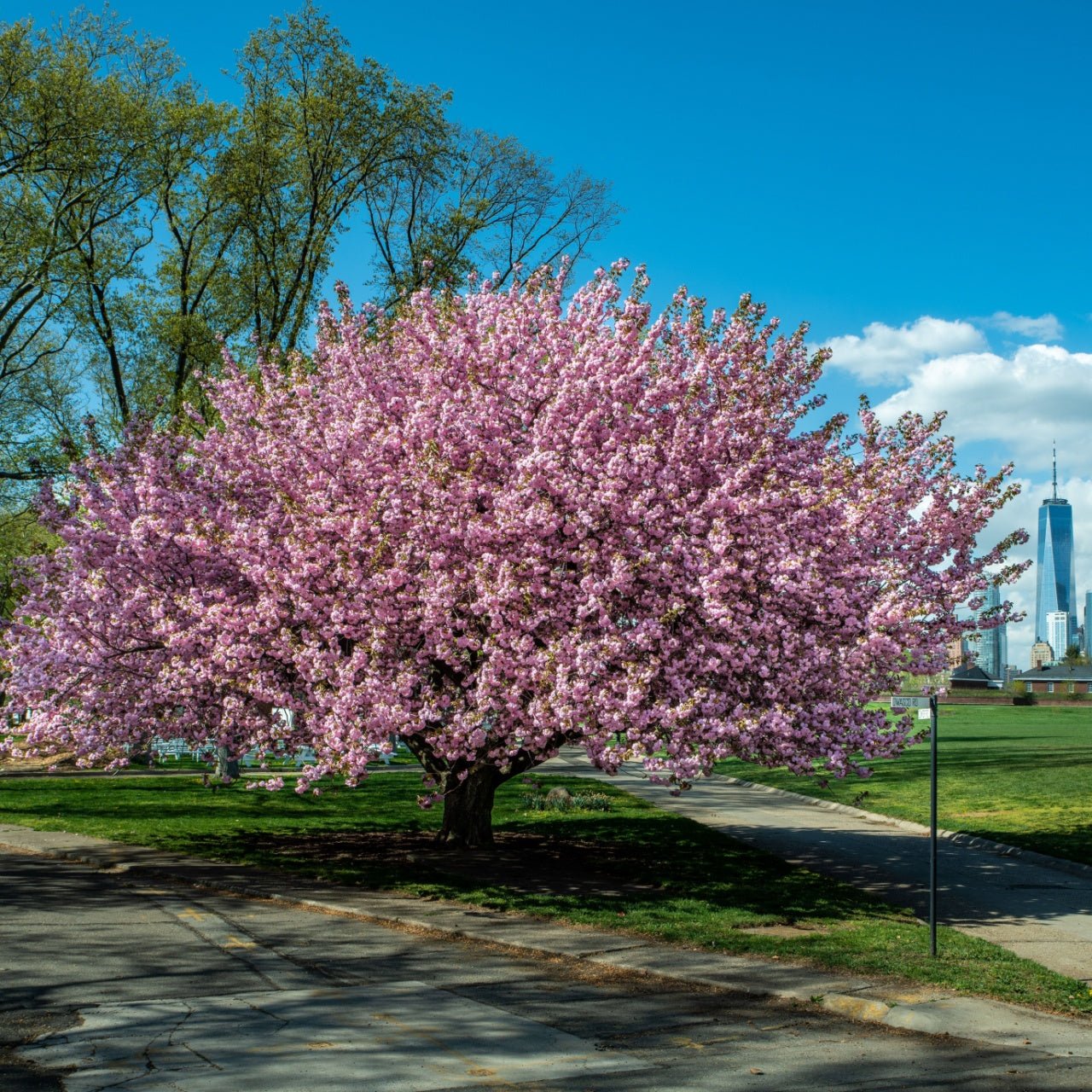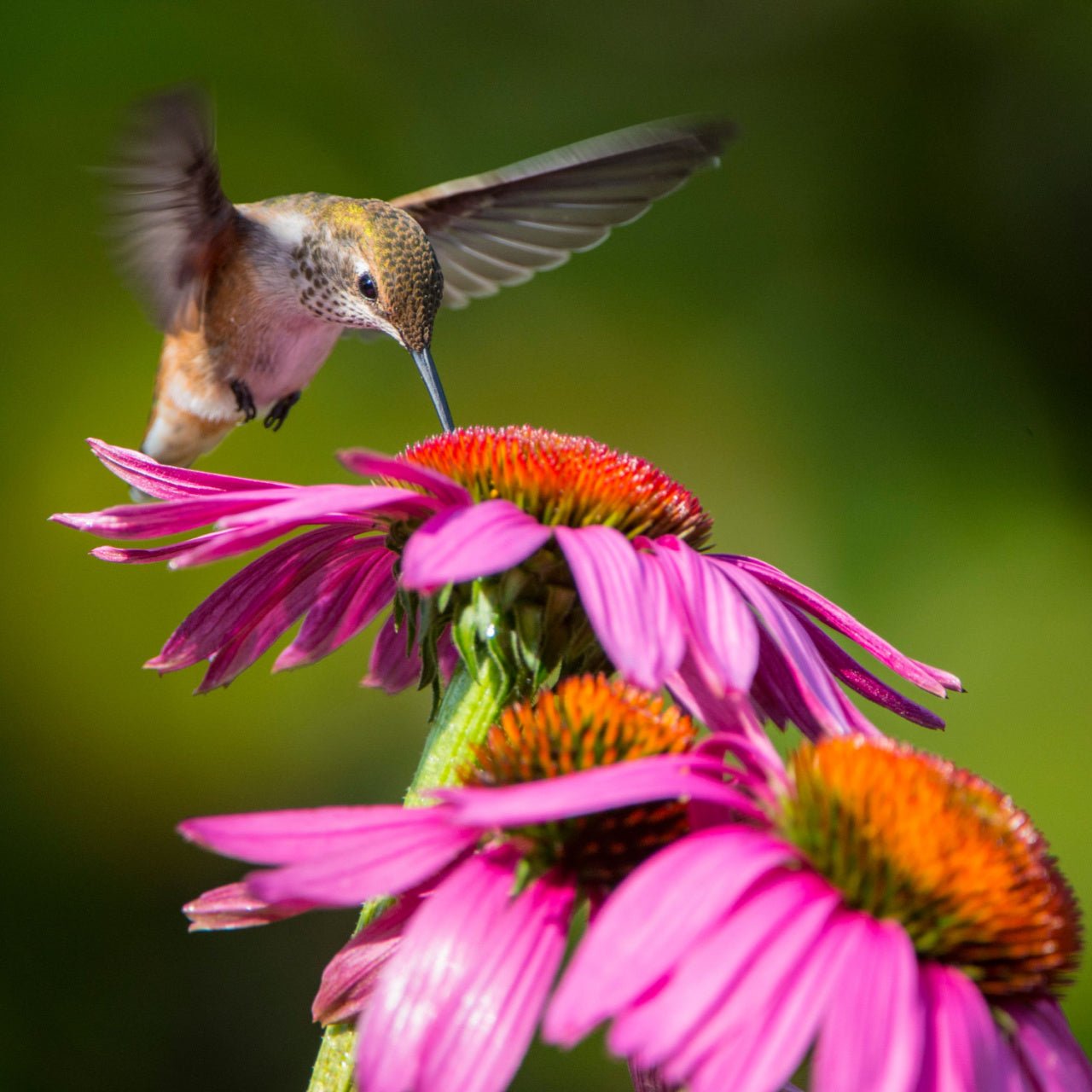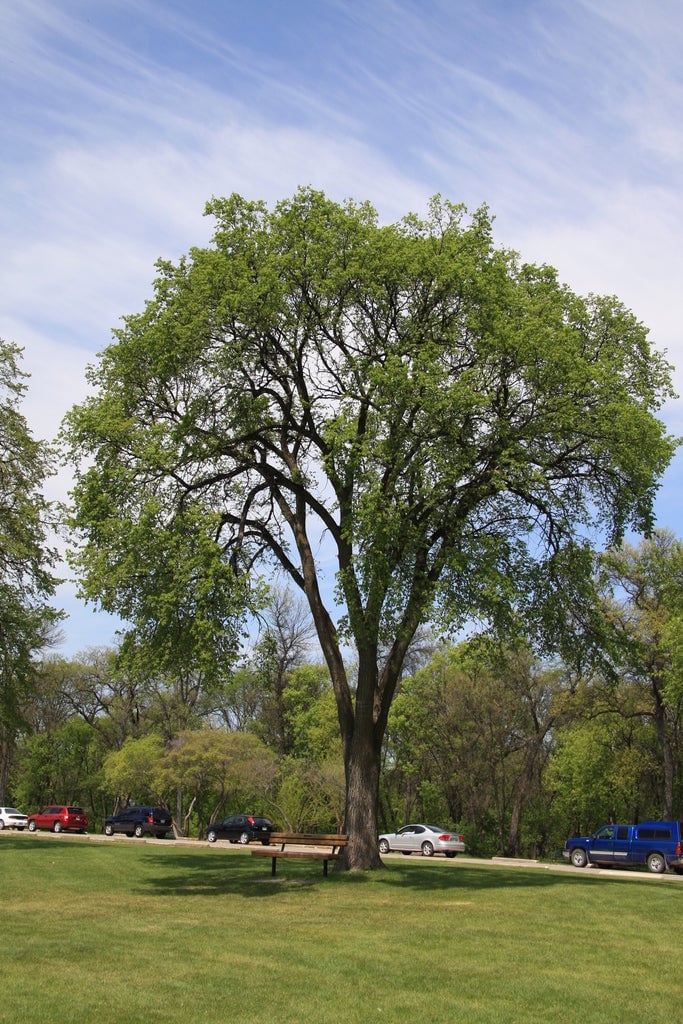
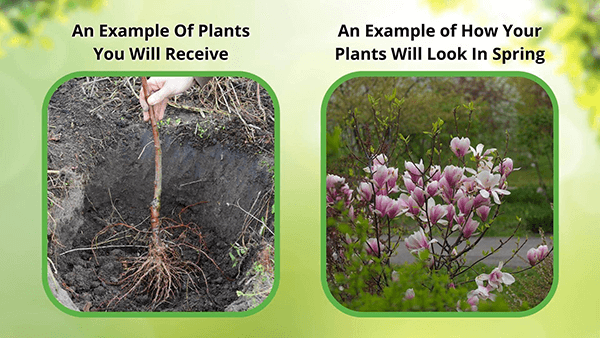
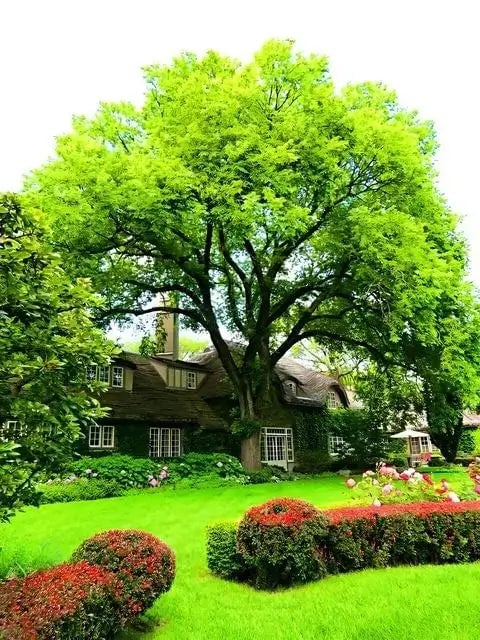

Elm Tree
Provides ample shade for cooling
Fast-growing with minimal maintenance needs
Resilient to urban environmental stress
Thrives in
ZONE 2ZONE 3ZONE 4ZONE 5ZONE 6ZONE 7ZONE 8ZONE 9This plant ships:
November 20251 Year Guarantee on all plants
Elm Tree - Ulmus americana
Elm Tree (Ulmus americana) is a highly attractive and deciduous tree that will create an elegant landscape or garden and wildlife haven.
Plant Details - Elm Tree
Family: Ulmaceae
Light Requirement: Full Sun
Water Needs: Moist
Height: 60 – 80 ft.
Spread: 30 – 60 ft.
Growth Rate: Slow
Bloom Time: Spring
Flower Color: Red
Wildlife Value: Attracts butterflies and birds
Landscape Uses and Maintenance - Elm Tree
The Elm Tree is a rare, vase shaped deciduous tree that has an elegance unmatched by other trees. It is a beautiful native tree that used to be extremely common throughout the eastern region of the United States.
This tree is a great choice for planting as a shade tree or as a focal point in your yard. You can plant this tree in your woodland, butterfly, or native garden.
Its bark is dark gray and has deep ridges. The leaves are dark green and doubly serrated and will turn to a beautiful yellow in the fall. Its flowers are inconspicuous and are not ornamental in nature, but are a dark red.
Plant this tree in either full sun or partial shade. It will grow the best in a location with full sun where its growth will not be limited.
This tree prefers a location that has well draining and moist soil. Avoid planting this tree in a location with waterlogged or compacted soil. Be sure to water this tree in until it is well established in its new location.
This tree can be planted in a variety of soil textures, including clay, loam, or sand. Plant in a neutral soil.
It is a deer resistant tree. Protect it while it is still young and vulnerable to damage from deer browsing or buck rub.
This tree is very valuable to wildlife, providing both food and shelter. Small animals will eat the seeds.
Noteworthy Characteristics
Elm Tree is extremely susceptible to Dutch Elm Disease, but resistant cultivars are available.
This tree is a host plant for many butterflies, including Painted Lady Butterflies, the Mourning Cloak Butterfly, and the Question Mark Butterfly.
This Is How Your Plants Will Look upon Delivery

Height at Maturity
Over 25 Feet
Care
Elm trees thrive in well-drained soil with regular watering during dry spells. Prune them in late winter to maintain shape and remove dead or diseased branches. Watch for pests and treat promptly to ensure a healthy tree.
Plant Reproduction
Elm trees spread via wind-dispersed seeds and root suckers
Plant bare root trees during the dormant season in early spring or late fall (November through April). Dig the hole twice as wide as the roots so the soil is well-drained. Position the tree so the root flare is at or just above ground level. Fill the hole back with the soil you dug from and water. Maintain soil moisture, especially in the tree's early years, by providing deep, regular watering. Apply a 2-4 inch mulch away from the trunk at the base to retain moisture and suppress weeds. Prune trees during the first few seasons to establish strength and resilience, remove damaged branches, and continue maintenance pruning as the tree matures. Regularly inspect for pests and diseases and apply integrated pest management practices. Protect young trees from mechanical damage and extreme temperatures with tree guards, and stake them if necessary for support, removing the stakes after one or two years.
Shipping date depends on the date displayed and chosen when you order from the product's page.
We only accept returns on plants verified dead. If you think your plants have died, we offer a 1 year warranty, please use this File a Claim Link to verify dead plants and start with return warranty process.





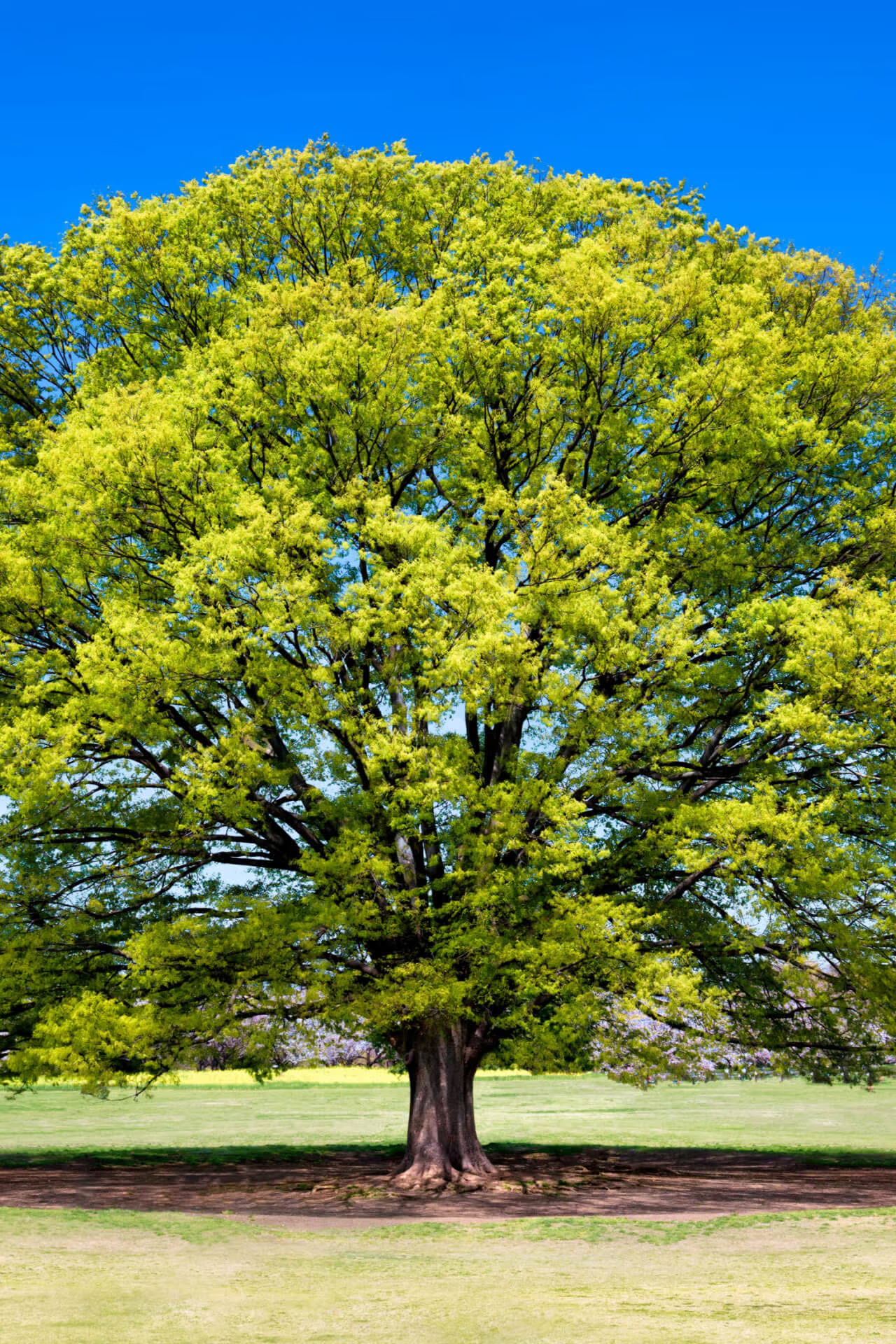
Majestic Appearance:
Elm trees are known for their graceful, vase-shaped canopy that provides ample shade. Their elegant structure adds a stately and timeless beauty to any landscape.
Adaptability:
These trees are highly adaptable to various soil types and environmental conditions. Whether you have sandy, loamy, or clay soil, elms can thrive, making them versatile for different gardening needs.
Rapid Growth:
Elm trees grow quickly, making them an excellent choice for those looking to establish shade or privacy in a shorter time frame. Their fast growth rate helps transform a garden or yard rapidly.
Historical Significance:
Elm trees have a rich history and cultural significance, often associated with strength and endurance. Planting an elm can connect you to a tradition of using these trees as symbols of resilience and community.
Caring Tips
How do I care for my Elm Tree?
Each box contains detailed care instructions and information about your product. But here's the basics.
Care Tips
Elm trees thrive in well-drained soil with regular watering during dry spells. Prune them in late winter to maintain shape and remove dead or diseased branches. Watch for pests and treat promptly to ensure a healthy tree.
Light Requirements
Elm Trees thrive in full sun to partial shade. They favor bright, indirect sunlight but can also tolerate some shade. For optimal growth and flowering, ensure they receive at least 4-6 hours of sunlight daily.
Hardy Planting Zones
2 • 3 • 4 • 5 • 6 • 7 • 8 • 9
Header
Use this content to share information about your store and products.
Frequently Asked Questions
How often should I water my plants?
How do I know if my plant is getting too much or too little sunlight?
What should I do to prepare my plants for winter?
What are the signs that my plant needs fertilizing?
How can I prevent pests from damaging my plants?
How do I choose the right plant for my climate zone?





